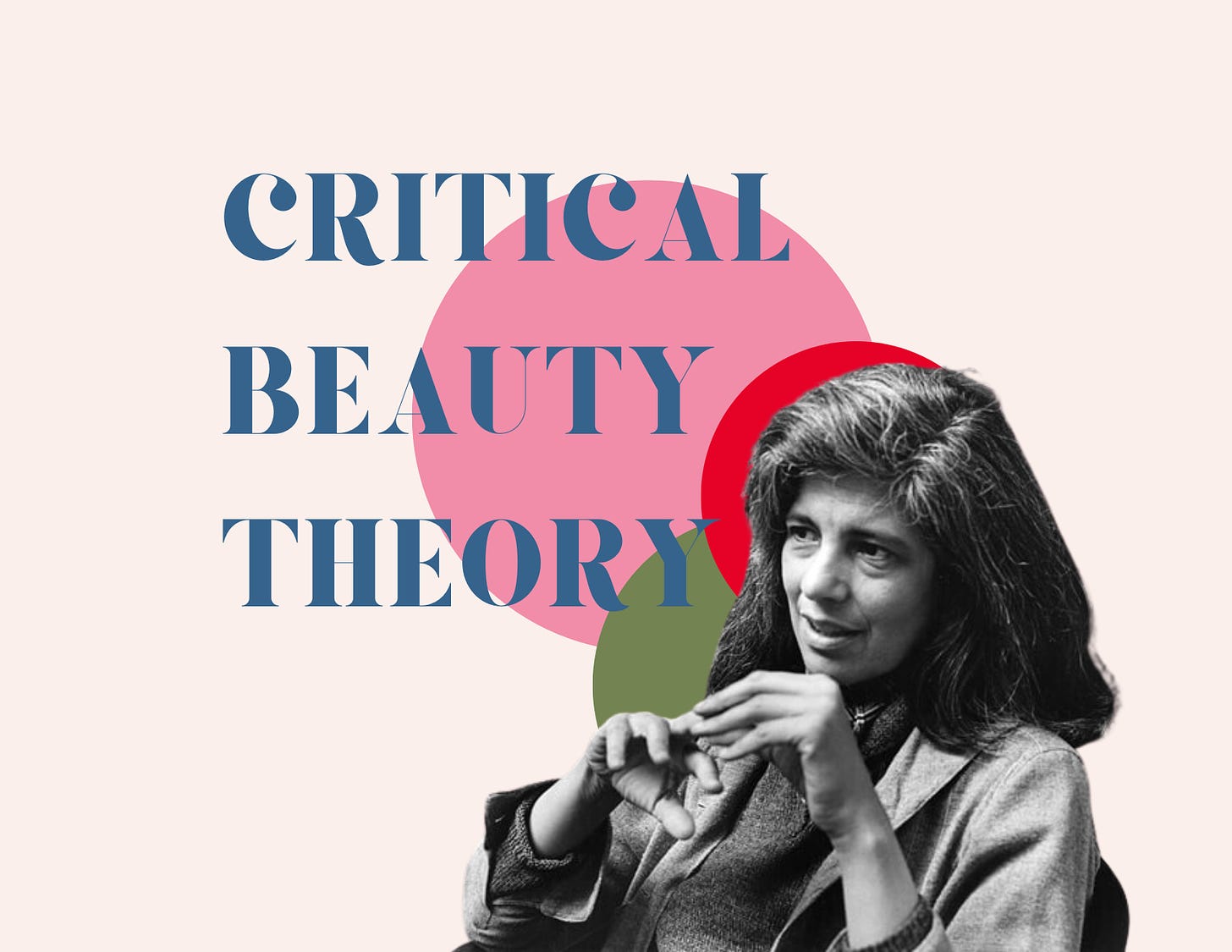The Critical Beauty Theory series offers an analysis of important writing about beauty and culture through varying critical lenses.
"A Woman's Beauty—A Put Down or Power Source” by Susan Sontag (1975)
Historical Context:
Susan Sontag was an American essayist, novelist, critic, and filmmaker. In this essay, she considers whether or not beauty is truly a source of power for women. The essay was published during the Women’s Liberation Movement, while women were fighting for representation in political office, equal pay, protections from harassment and abuse in their public and private lives.
Key Points:
Beauty was an early determinant of morality and virtue, especially in religion.
Sontag acknowledges that “becoming beautiful” is work.
I talk about Beauty Work at length in Optimal Beauty Standards: What does DIY culture demand of us
It is a frustrating trap that women are expected to be beautiful and are in turn criticized for being superficial.
Favorite Quote:
“To be sure, beauty is a form of power. And deservedly so. What is lamentable is that it is the only form of power that most women are encouraged to seek.”
Important Considerations:
Sontag does not explicitly address the experiences of any women who are not white in this piece. This color-blind approach assumes an applicability to all women and occludes the intersectional experiences other women have with sexism and racism.
This is significant because Black women’s relationship to beauty initially aligned with Sontag’s points, but diverges without consideration of race and racism. Black women engaging in beauty work is not just a question of superficiality but an attempt to challenge racist ideology that shaped our lived experience in the public and private sphere, especially in the 1970s.
In Ain’t I a Beauty Queen: Black Women Beauty, and the Politics of Race Maxine Leeds Craig considers the significance of beauty for Black women in midcentury America. She writes, “In response to the exclusion of black women from dominant representations of beauty, African American women’s beauty became part of the symbolic repertoire with which champions of the race sought to assert racial pride.” In the 1970s many Black women were being tugged in different directions as prevailing social movements like, Women’s Lib and Civil Rights, did not overlap regularly or neatly.
Sontag makes a valid and compelling argument about the “trap” of beauty, and additional consideration for other women’s experiences expands and strengthens the piece.
Recommended Reading & Viewing:
The Combahee River Collective Statement by Combahee River Collective
Socio-political statement from some 1970s Black Feminists
Ain’t I a Beauty Queen: Black Women Beauty, and the Politics of Race by Maxine Leeds Craig
A scholarly examination of the role of beauty on mid century Black women’s lives.
Feminism: The Second Wave by The National Women’s History Museum
A historic review of the Women’s Liberation movement
Maude Meets Florida, Maude S1E3
Provides readers with a visual example of the differences in Black and white women’s approaches to feminism in the 1970s
Supplemental Reading: Good Times for Florida and Black Feminism by Kimberly Springer




Thank you for this. I just subscribed 💖